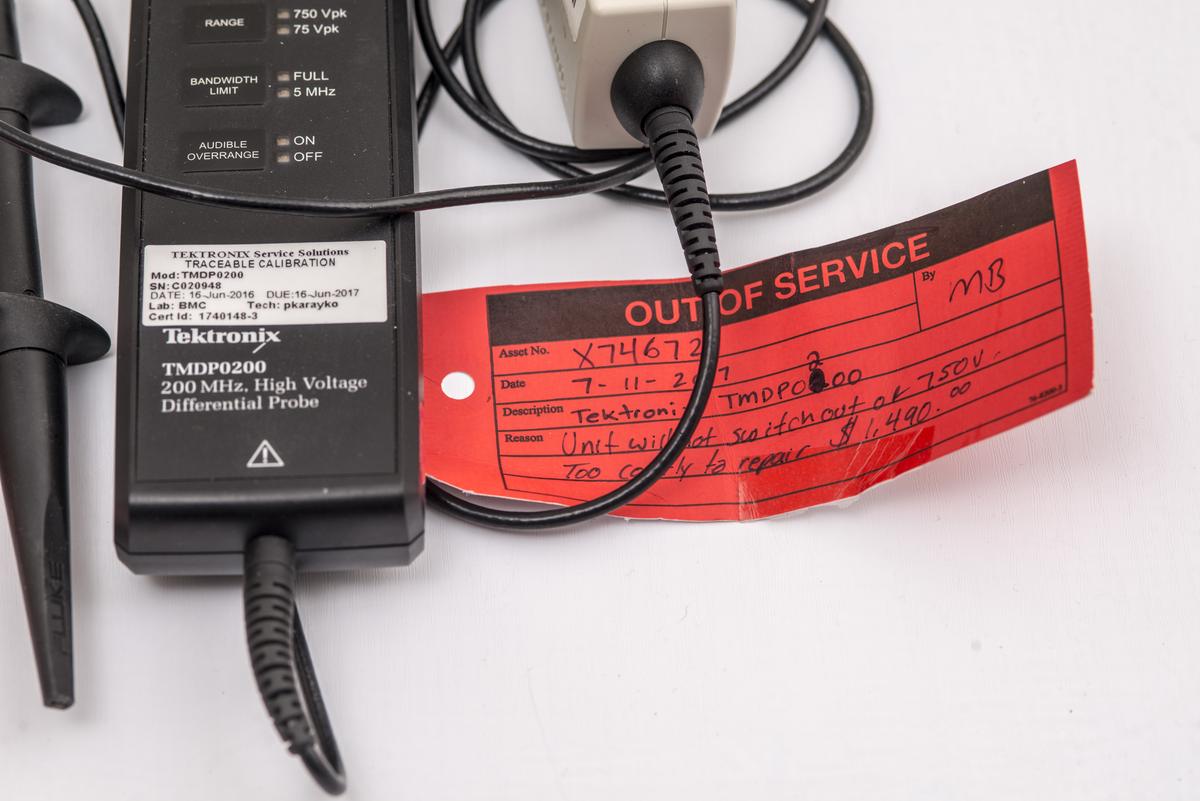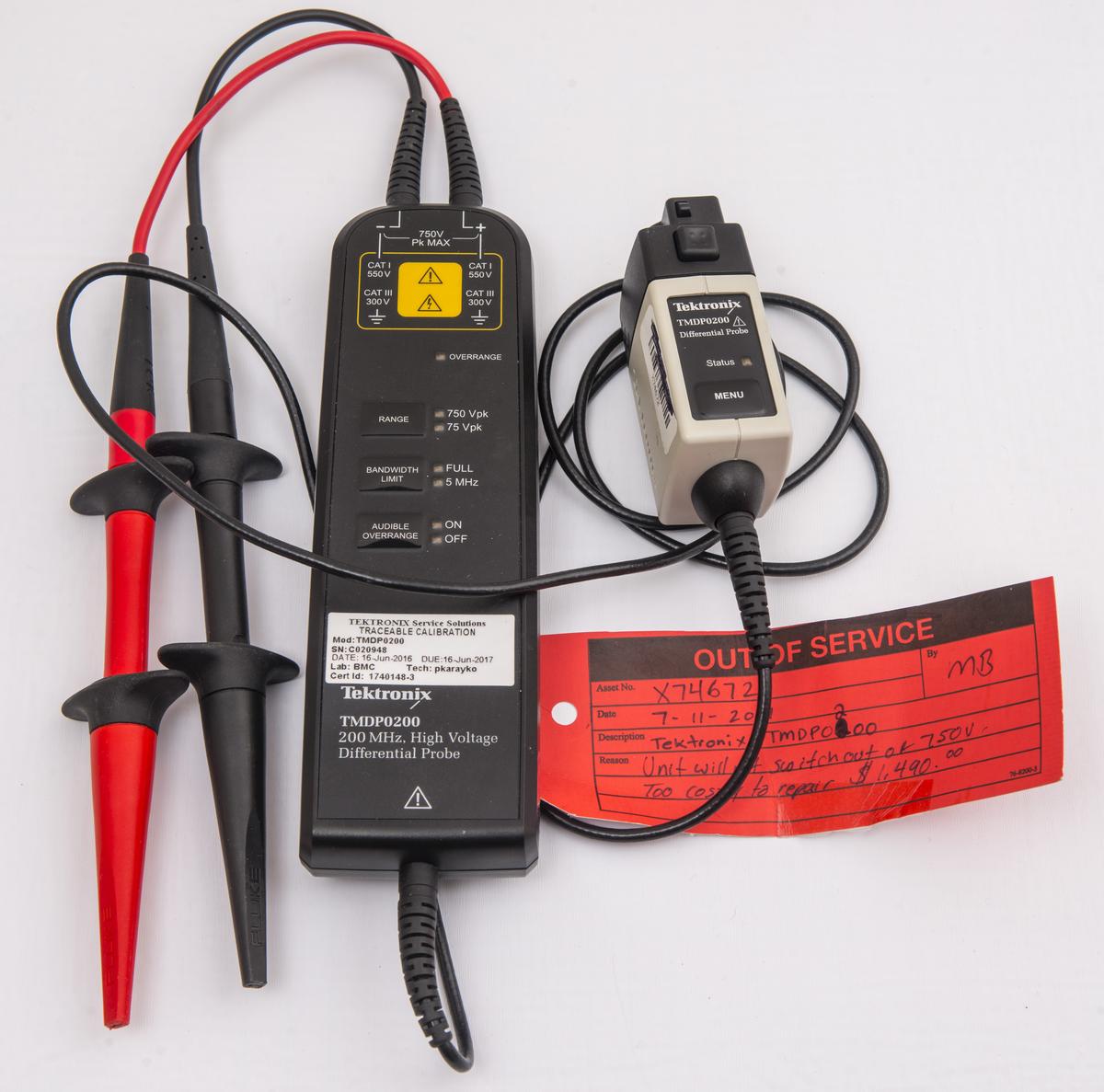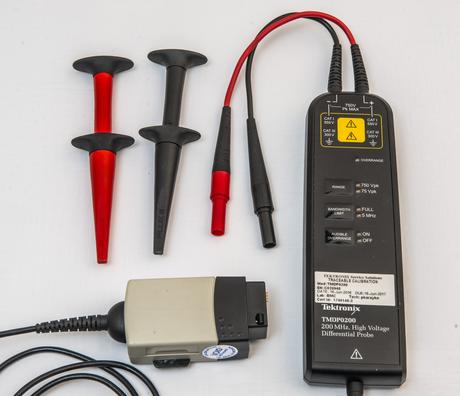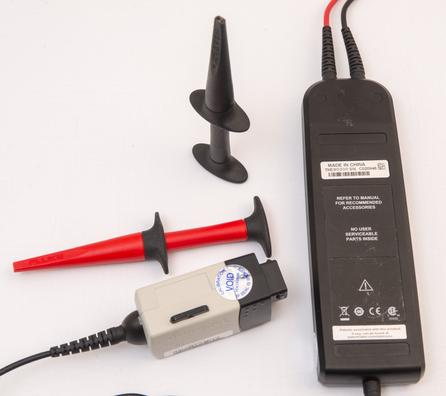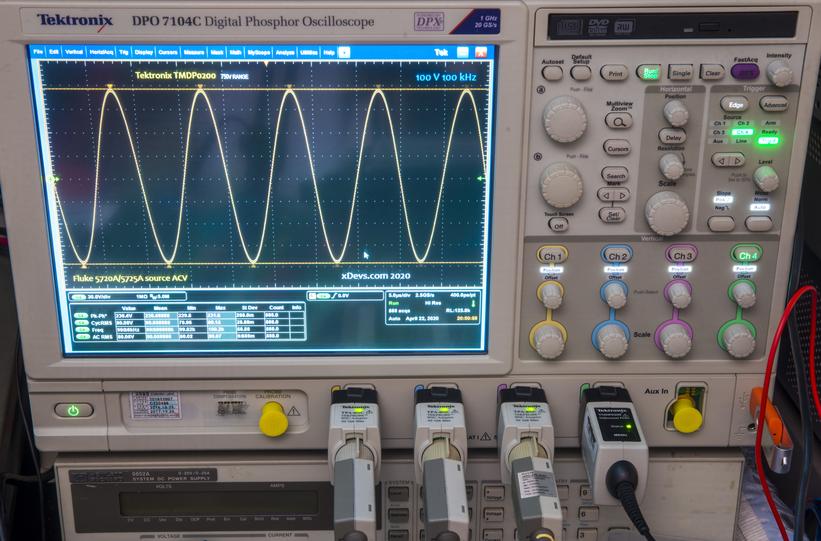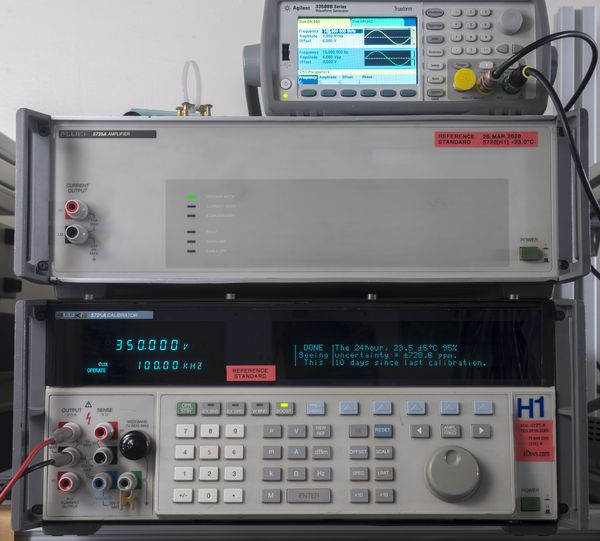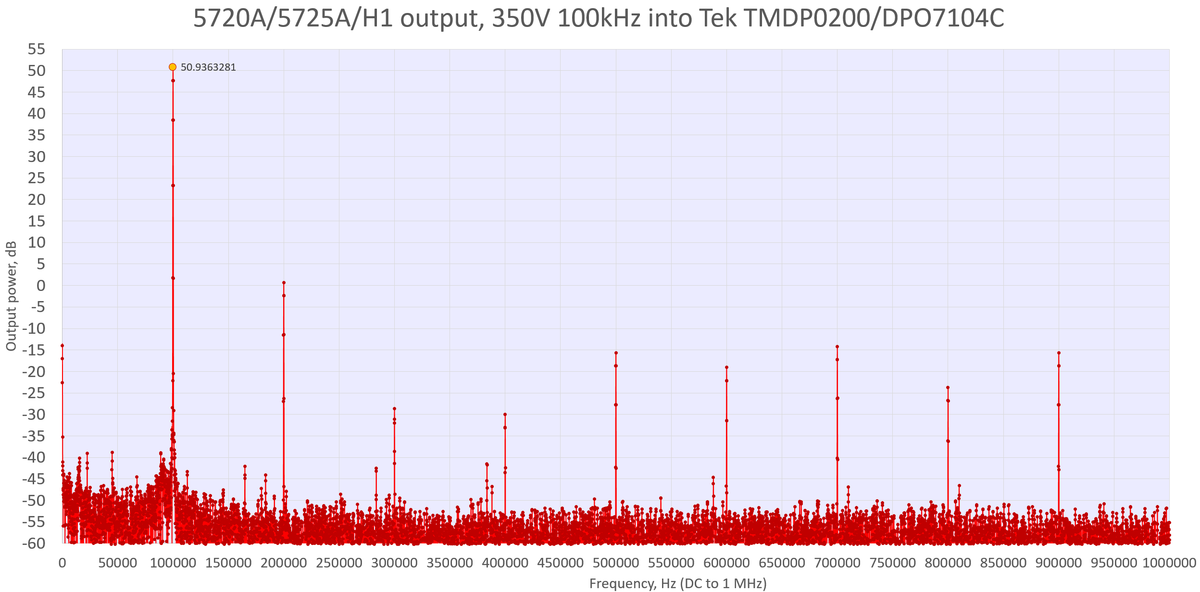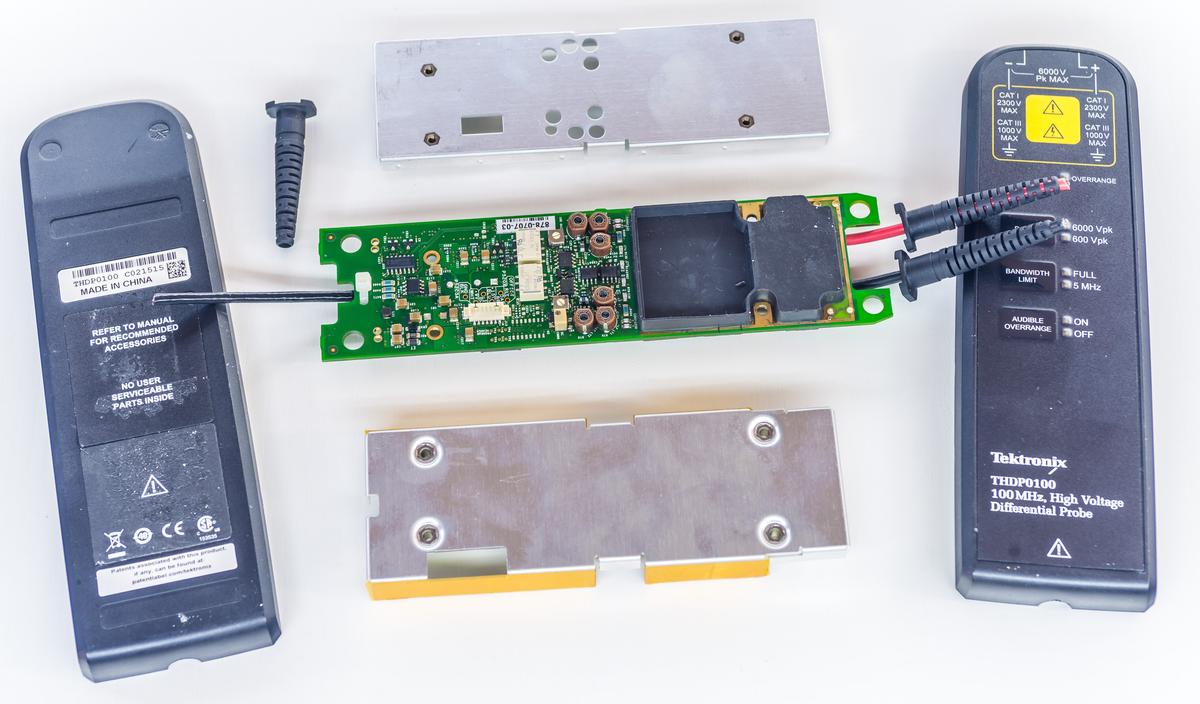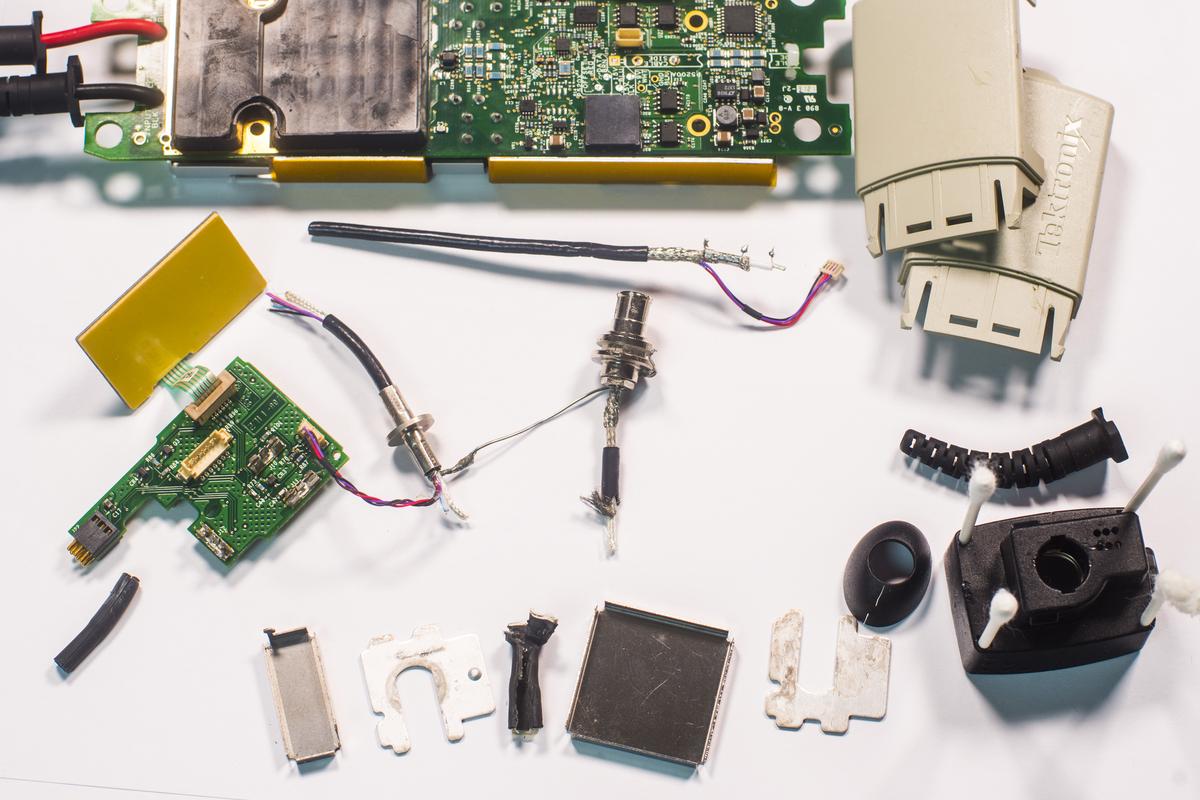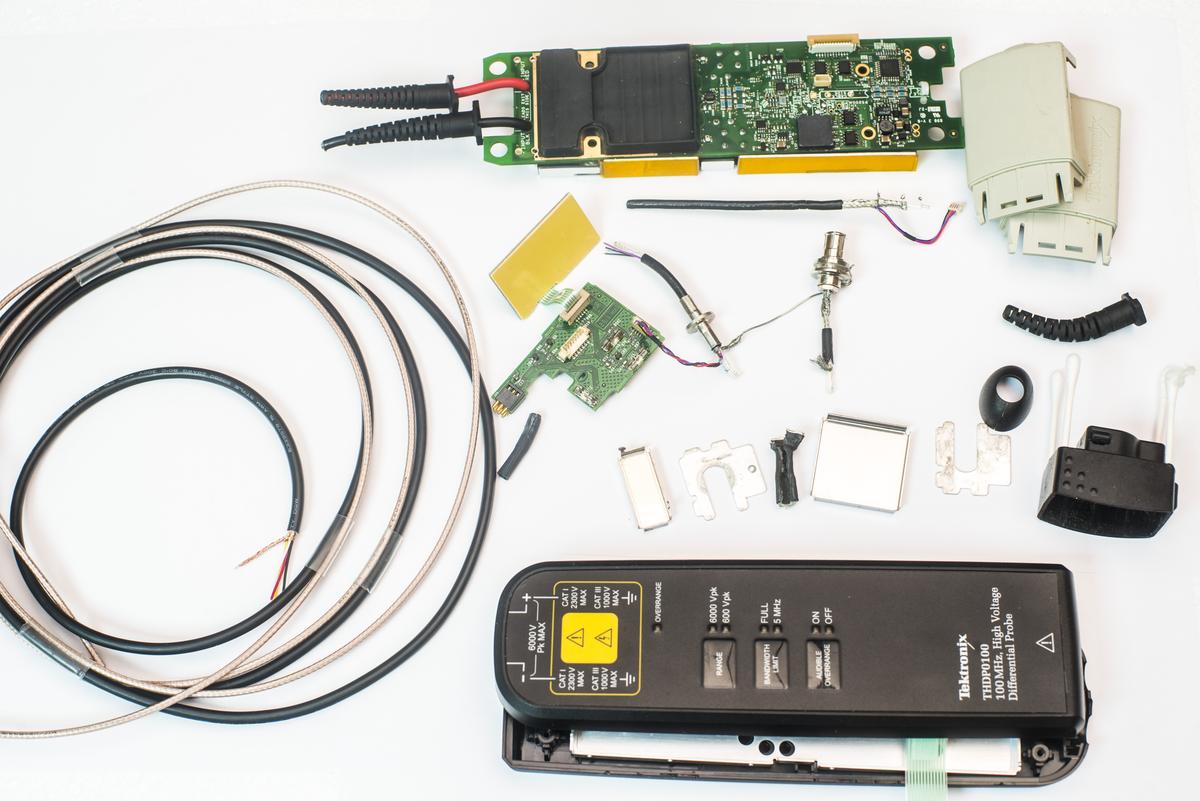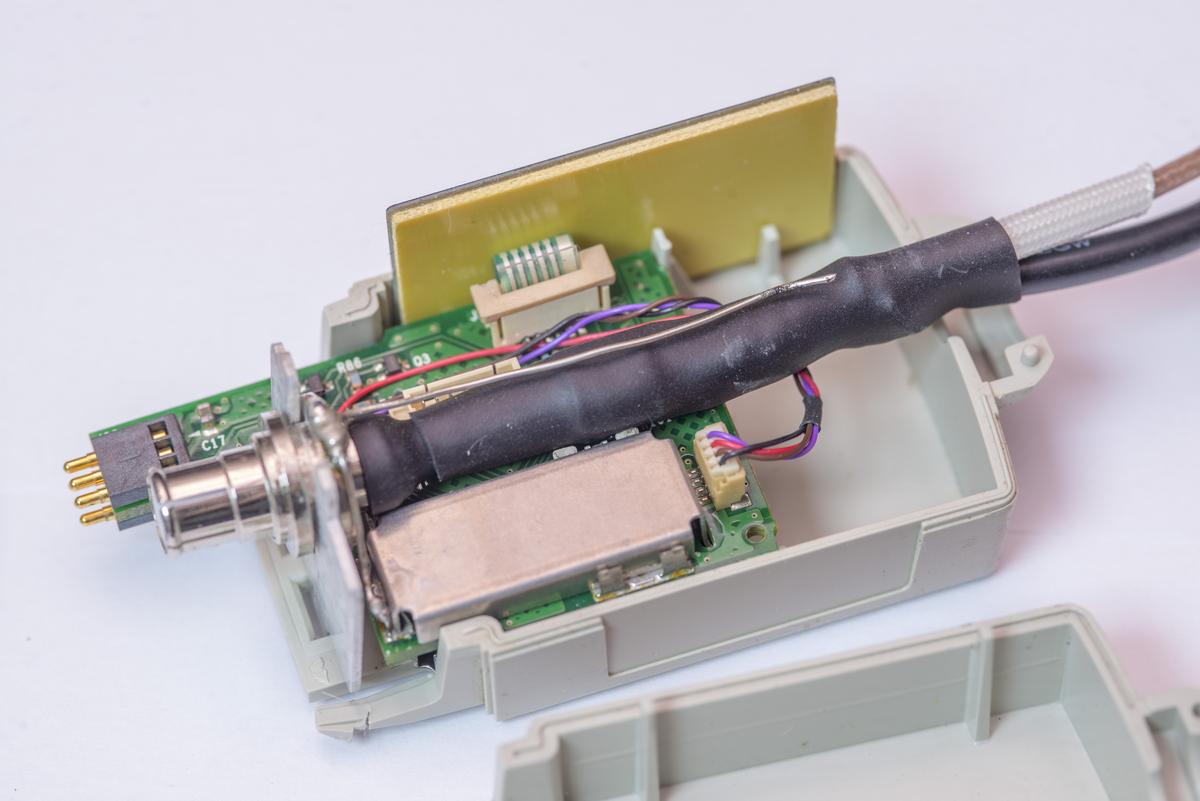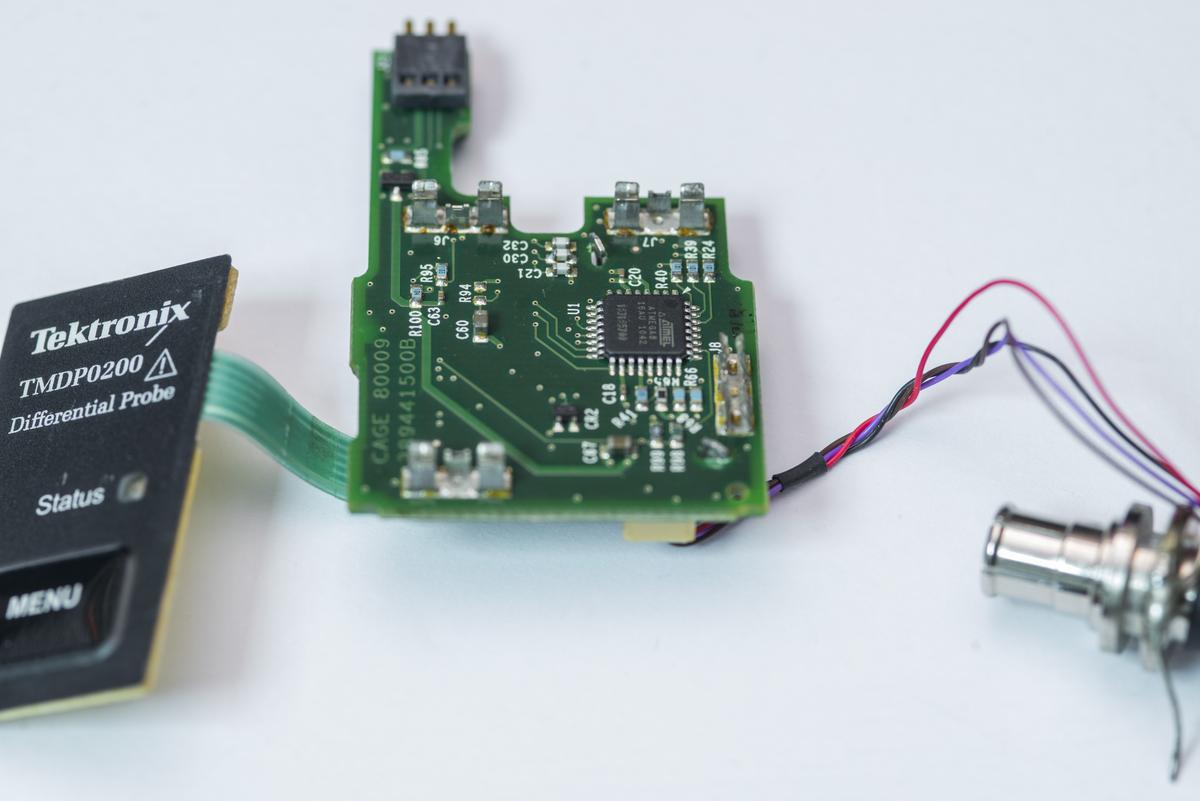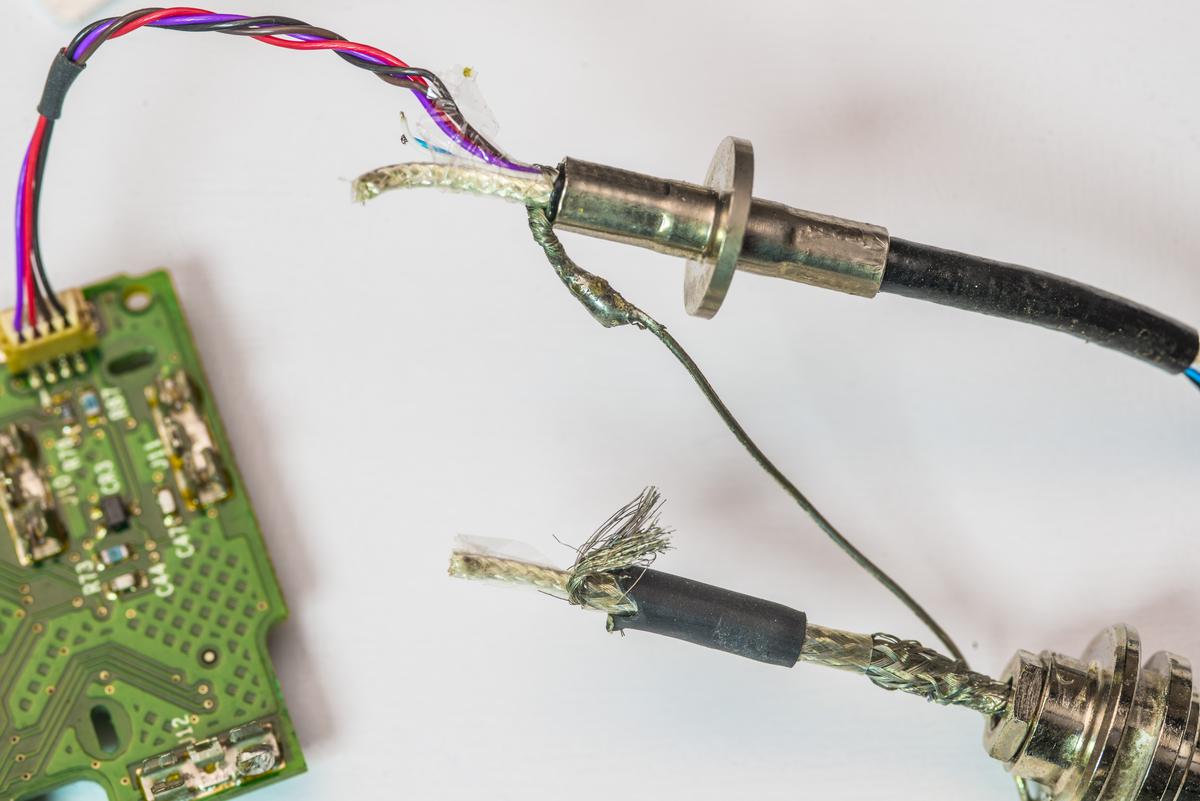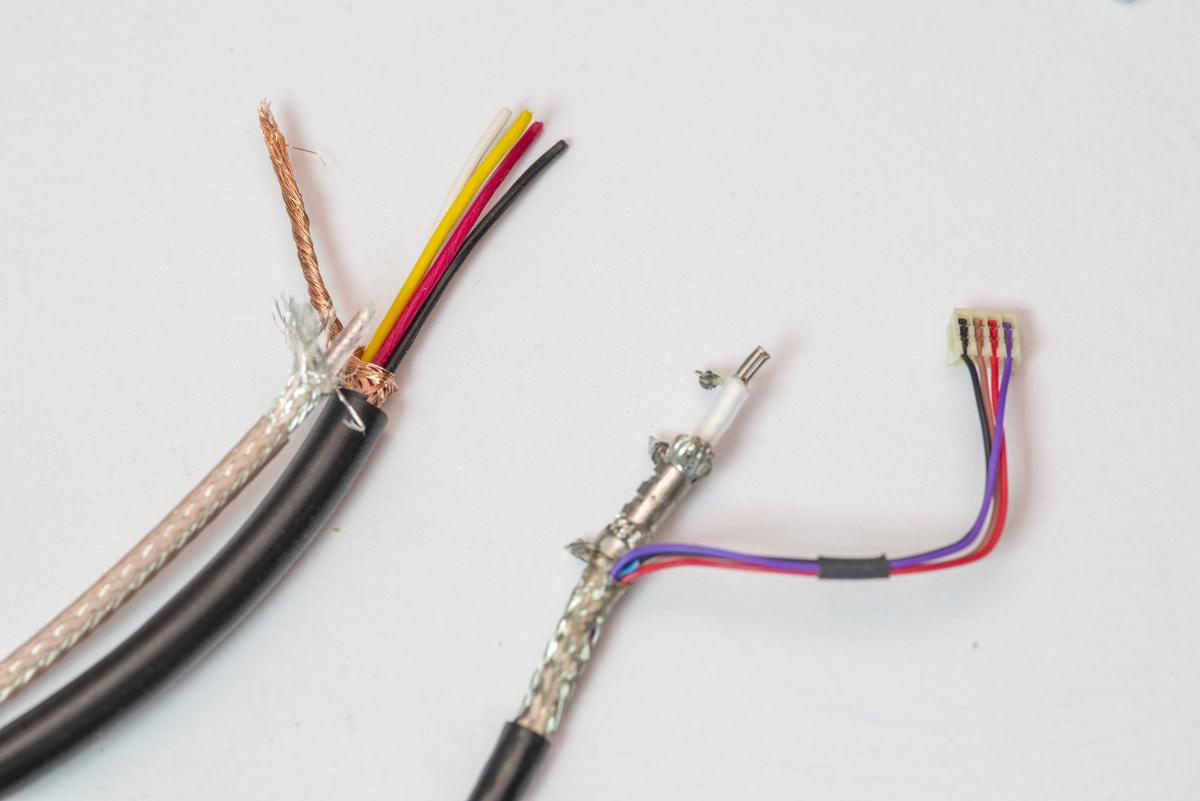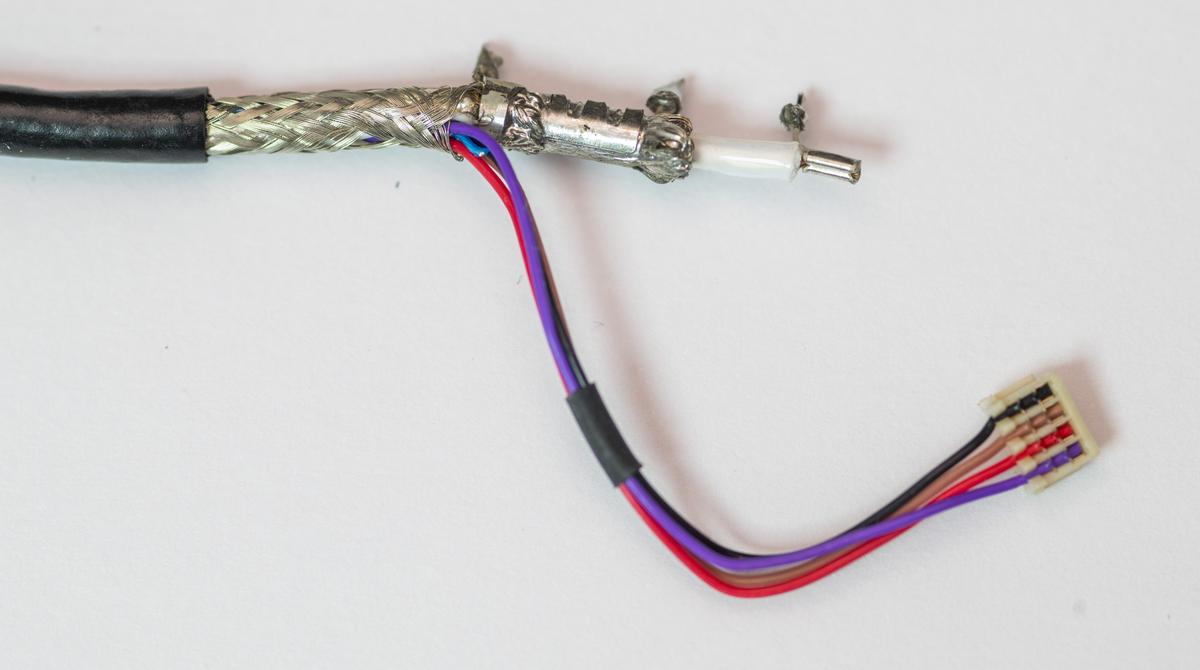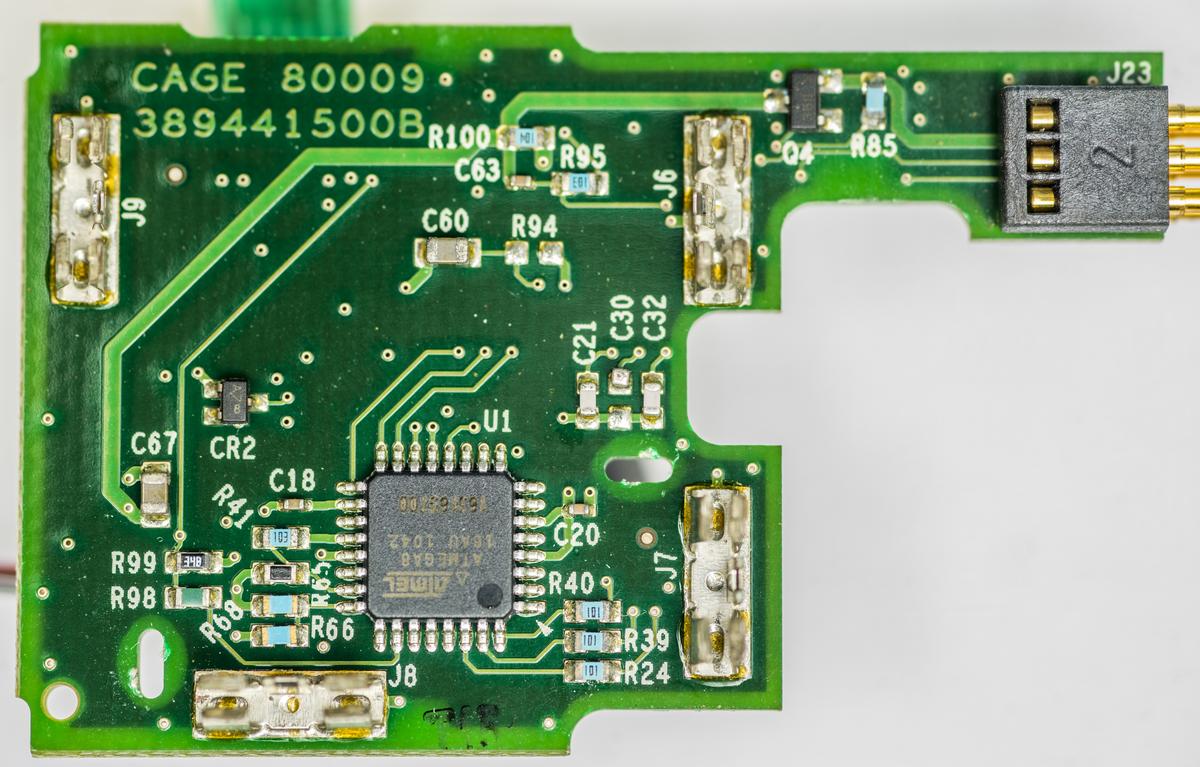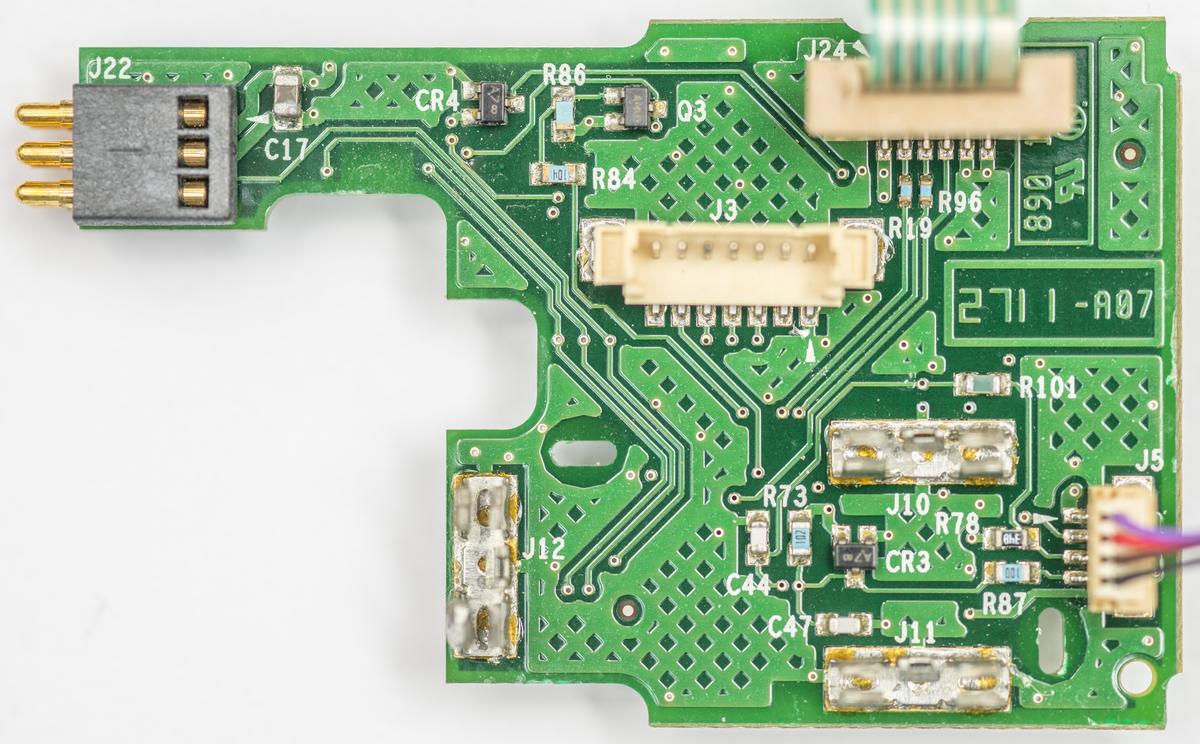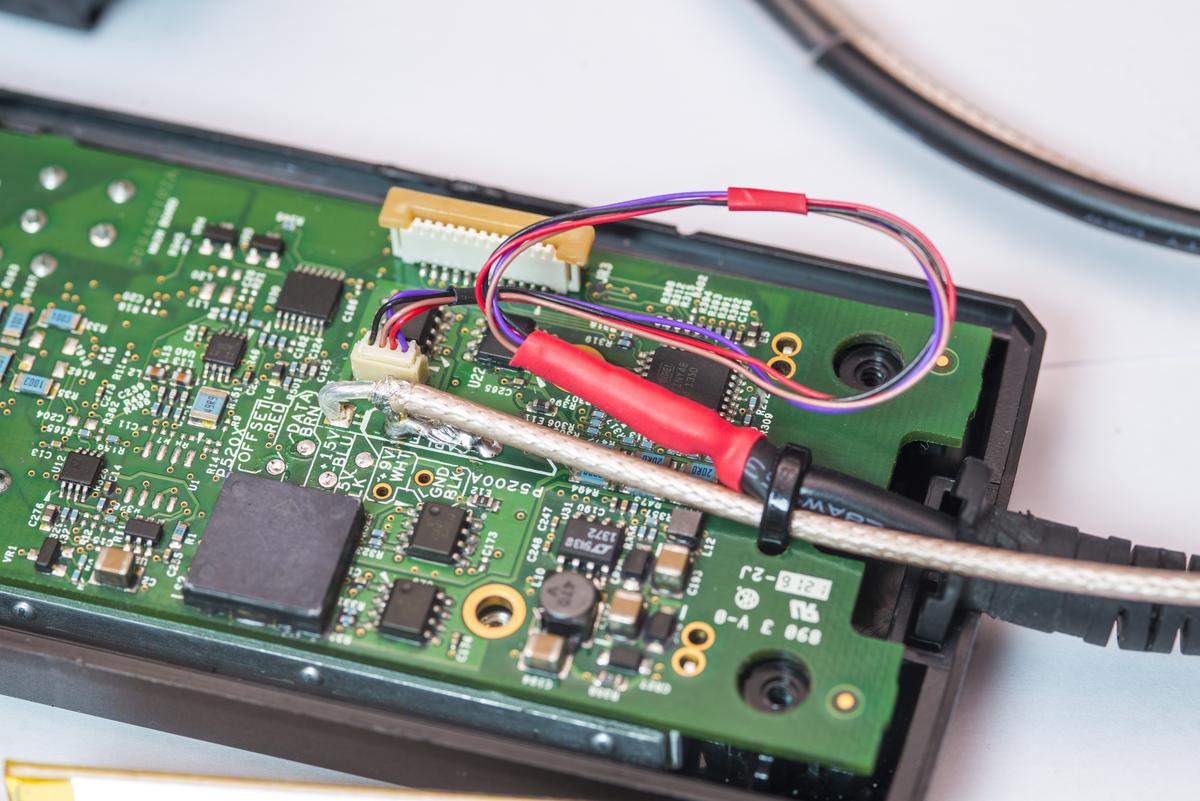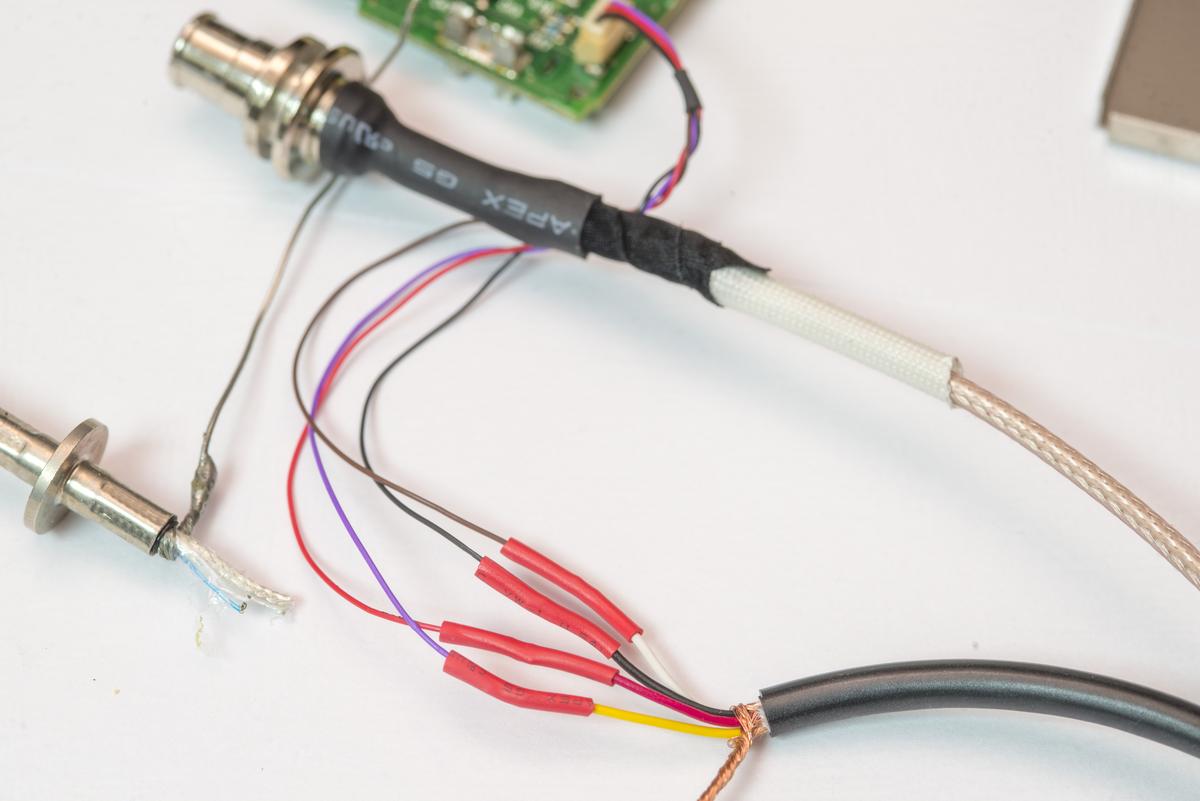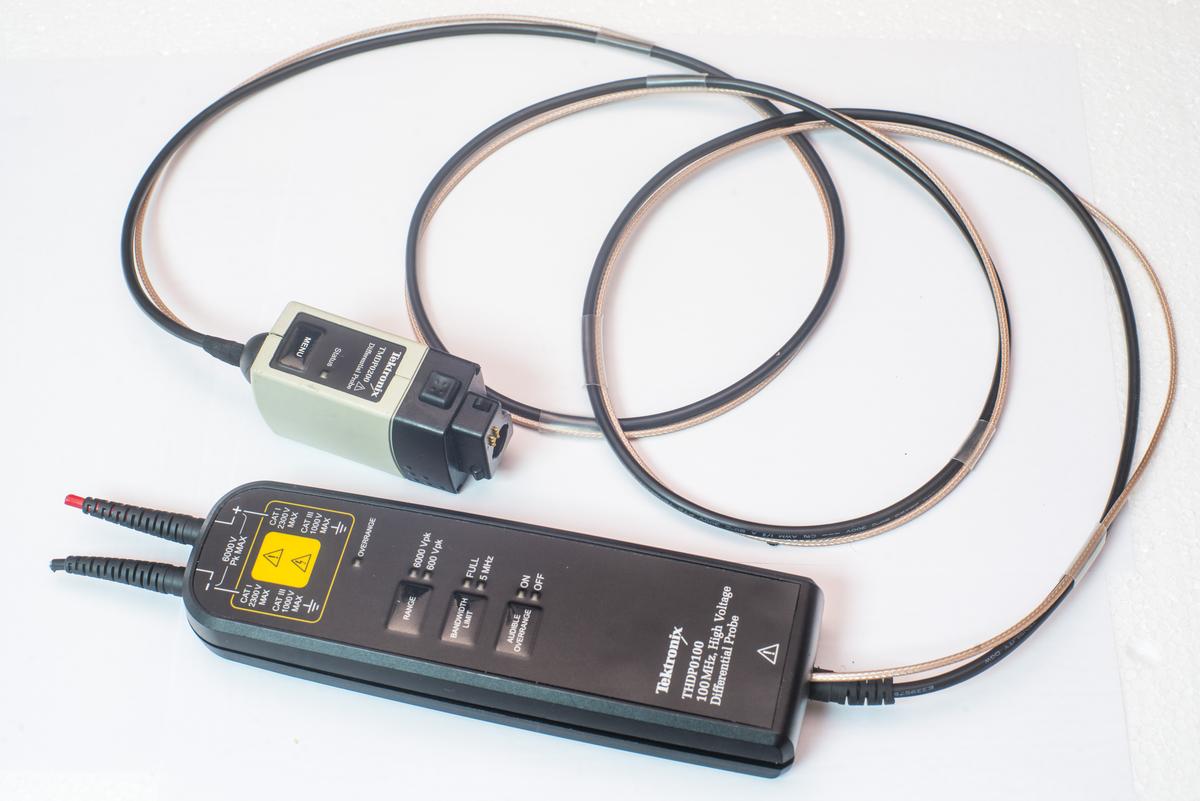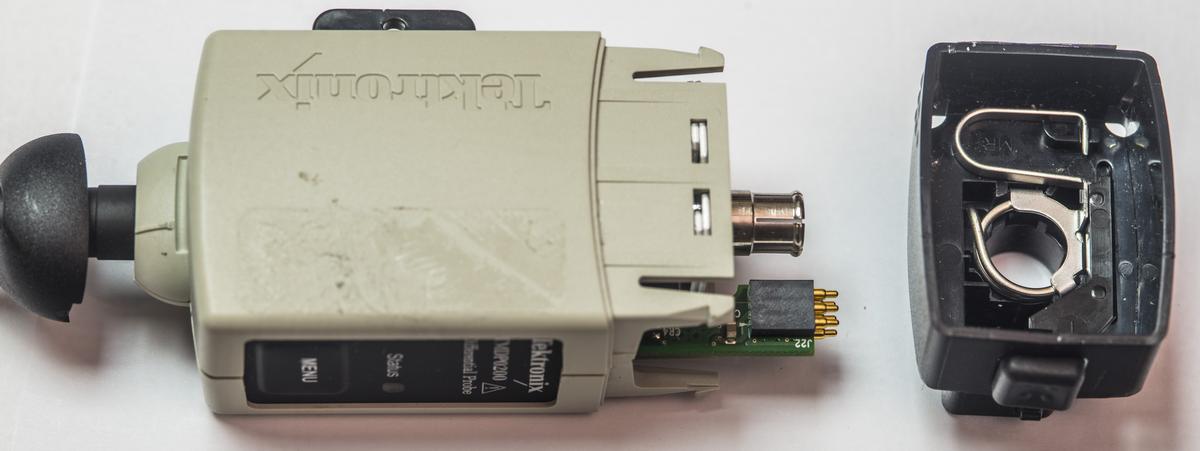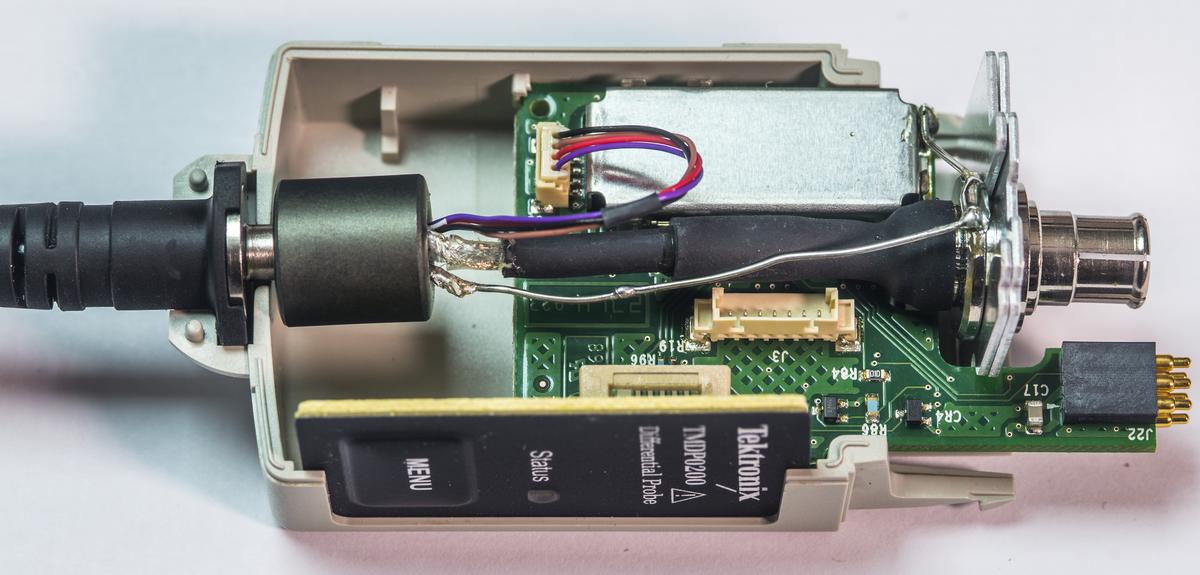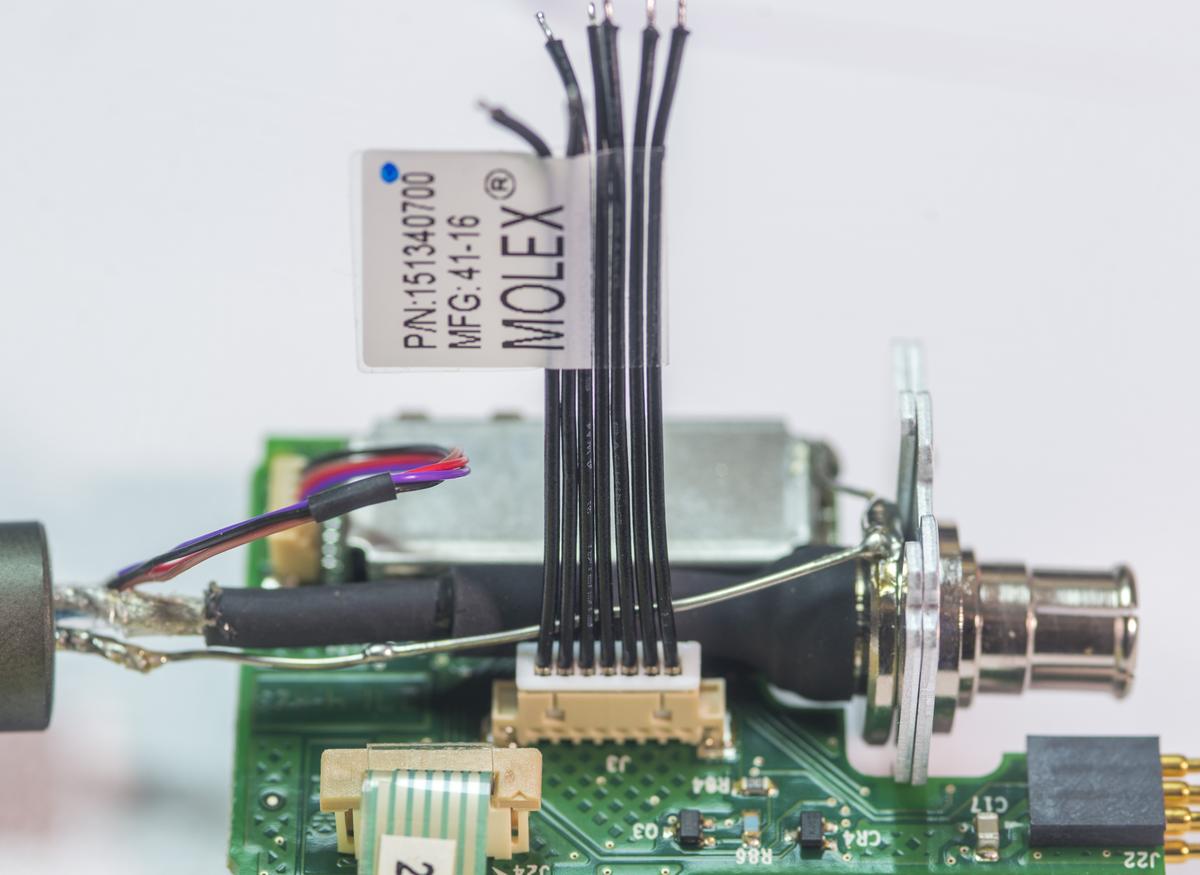- Tektronix TMDP0200 High-Voltage 200 MHz differential probe
- Tektronix THDP0100 High-voltage 100 MHz differential probe
Tektronix TMDP0200 High-Voltage 200 MHz differential probe
Feature set of TMDP0200 probe:
- DC to 200 MHz Bandwidth
- Maximum voltage 550V CAT I, 300V CAT III
- Risetime <1.8 ns, slew rates <275 V/ns at 1/250 gain
- 10 MΩ Differential input impedance
- 5 MΩ single-ended input impedance for each tip
- 2 pF Input Capacitance
- 25x and 250x Attenuation (±75Vpk or ±750Vpk ranges)
- TekVPI Interface
I’ve bought this probe as broken/for parts. MSRP for the new Tek TMDP0200 is around $2130 USD.
Diagnostics
Probe had no physical damage from outside, did not have any accessory bundled with sale. Out of service tag with “unit will not switch out of 750V” was included in the bag.
However, after connecting to our Tektronix DPO7104C scope probe was correctly recognized and detected, and worked just fine. Easiest repair ever! :)
It also came with huge hook clips with Fluke logo stamped on the ends. Very nice high-quality kit.
Probe has auxilary electronics in connector head, that plugs into TekVPI oscilloscope port. Actual probe high-voltage electronics and front-end is located in plastic enclosure body. There is custom 4-layer PCBAs, mounted with in internal aluminum shields.
Just like any other active Tektronix probe, this PCBA have “smarts” for probe detection/control and power supplies for active amplifiers/compensation.
Overload function also worked correctly, with probe emiting faint beeps and flashing red LED.
Typical to Tektronix probes, there is little ATMEL ATmega8 8-bit microcontroller to select various probe functions, provide digital identification for scope, store serial number, etc.
Benchmarking Tektronix TMDP0200 probe
For high-voltage tests I’ve used trusted Fluke 5720A with Fluke 5725A booster amplifier and Tektronix DPO7104C oscilloscope.
Test results
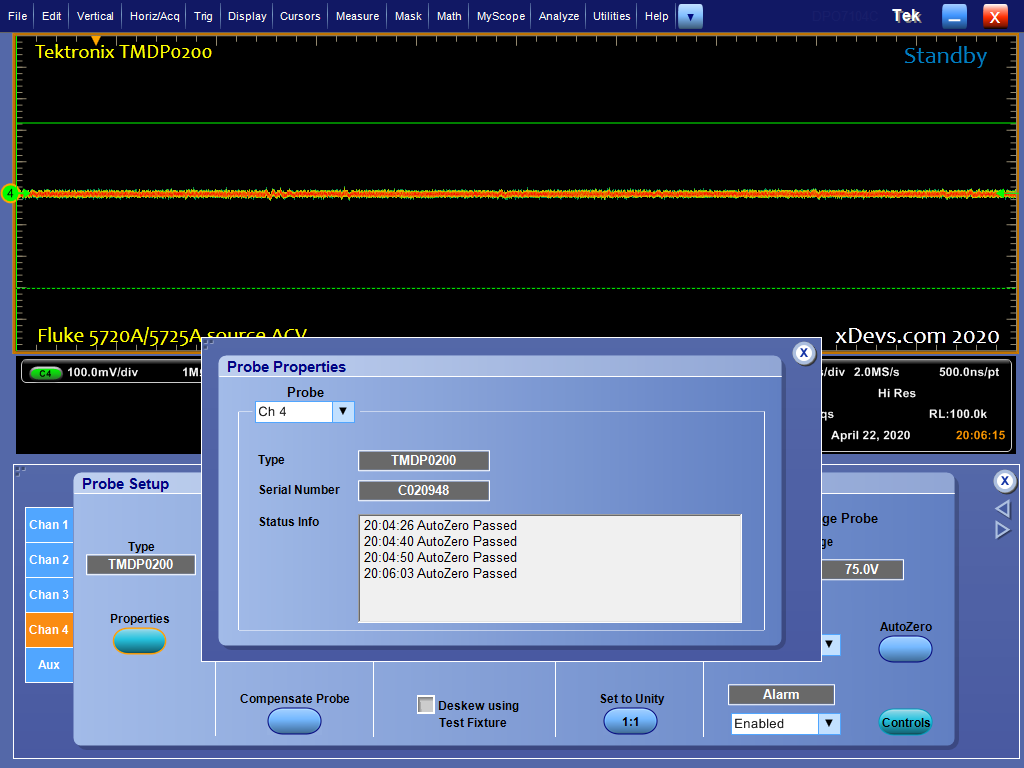
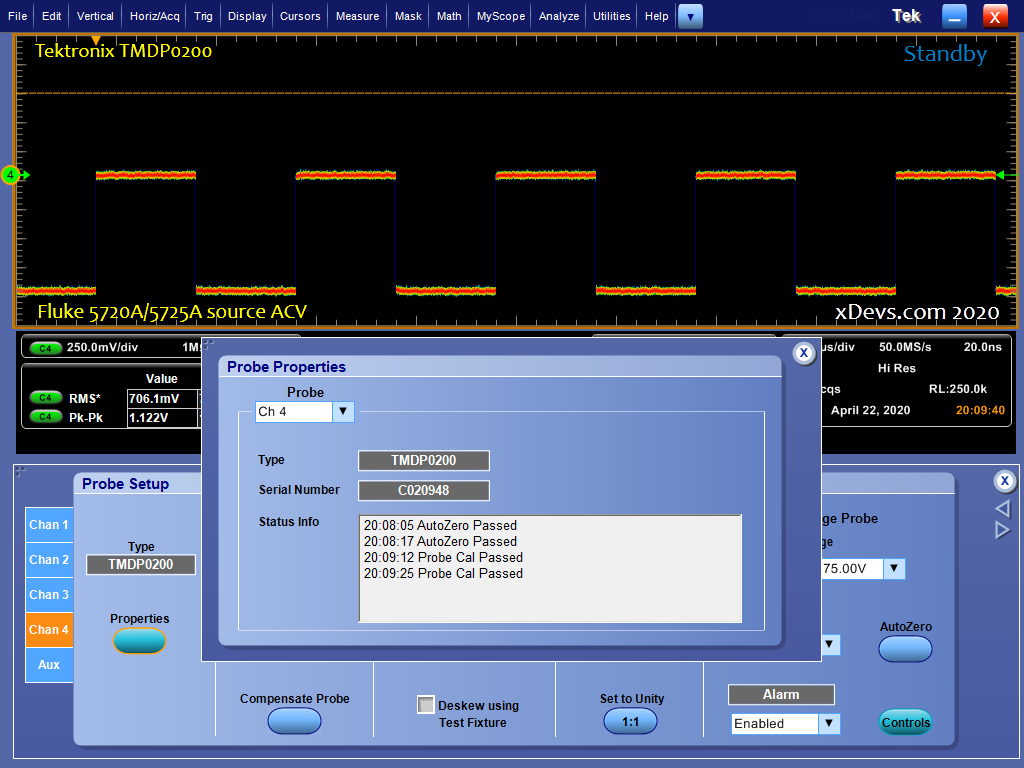
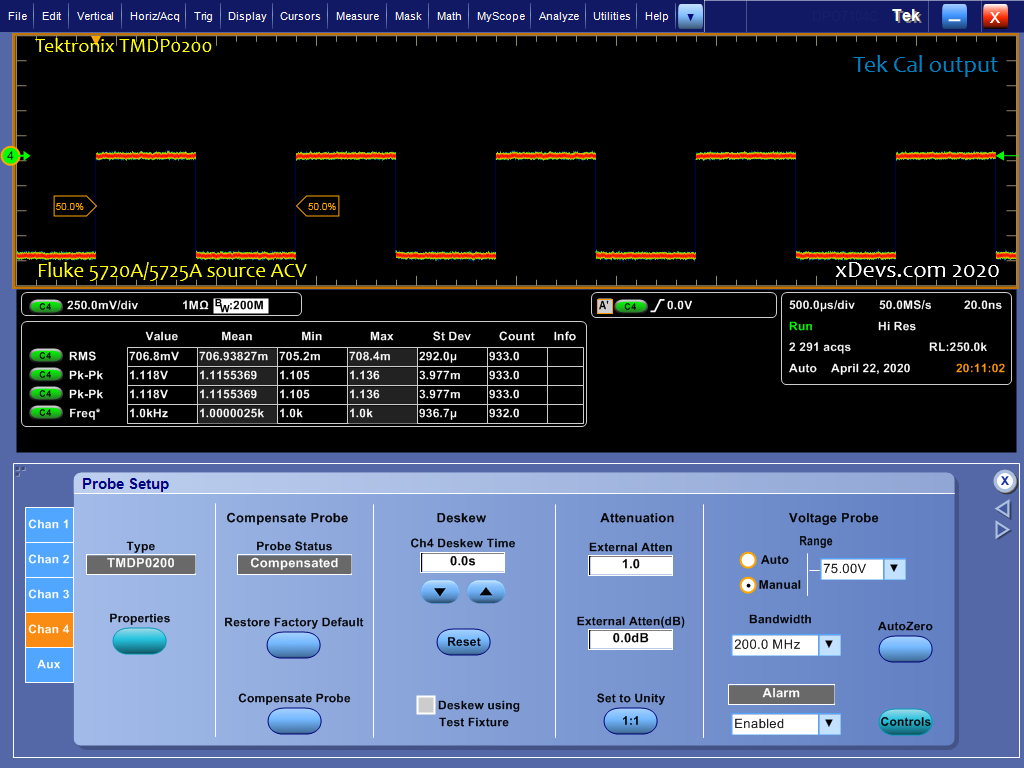
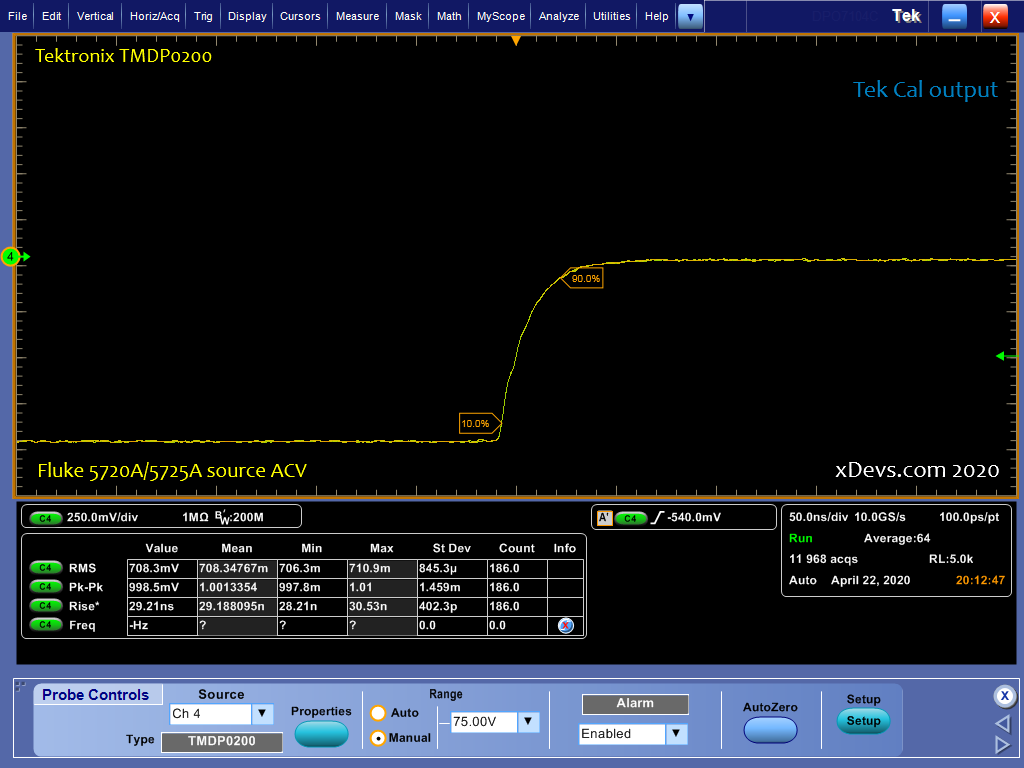
Spectrum plot of 350 VAC, 100 kHz sine measured via TMDP0200 probe on 750Vpk-pk range and 5 MHz bandwidth mode.
Some result files and reports:
350V 100kHz Spectrum analysis, MHT-report
100V 100kHz Spectrum analysis, MHT-report
350V 100kHz Spectrum analysis, CSV RAW-data
Tektronix THDP0100 High-voltage 100 MHz differential probe
This probe is more interesting, as it’s rated for voltages up to 6kV. I’ve bought this probe as broken/for parts. MSRP for the new Tek THDP0100 is around $3620 USD.
Feature set of THDP0100 probe:
- DC to 100 MHz Bandwidth
- Maximum voltage 2300V CAT I, 1000V CAT III
- Risetime <3.5 ns, slew rates <2500 V/ns at 1/1000 gain
- 40 MΩ Differential input impedance
- 20 MΩ single-ended input impedance for each tip
- 2.5 pF Input Capacitance
- 100x and 1000x Attenuation (±600Vpk or ±6000Vpk ranges)
- TekVPI Interface
I got just the main probe “body” without the actual coax cable and TekVPI interface head that plugs into oscilloscope. To replace the head I’ve bought one of those ebay active TekVPI “probes” with cut cable.
But it was from another probe and not THDP0100, so microcontroller inside TekVPI assembly that responsible for ID needed correct firmware. Lucky for us, Tektronix left manufacturing ISP connector available on the probe PCB.
To make this probe functional again, or at least test it I’ll need to restore the head part that plugs into scope.
This was done by acquiring cut off head part from similar TMDP200 probe from secondary market.
There is single multi-layer PCB with AVR ATmega8 microcontroller for identification and control interfaces between scope and probe body. Connection between scope input BNC and probe is done using 50 Ω coaxial cable.
Coaxial connection was repaired with COTS cable.
For sideband power and control (likely I2C) I’ve used 4-wire shielded cable, ran parallel to coaxial wire externally.
PCB in head has not much else to it, but notably J3 available for programming of the microcontroller. More on this below in this article.
Restored connections at the body:
Probe ready for testing, without repairs at the input wires.
Reprogramming AVR ATmega8 microcontroller in probe head, to match ID after repairs
First take apart the head. There are four plastic latches holding black front bezel in place.
Without front bezel probe can be disassembled now. Remove black plastic cable stress relief cap and body covers out of the probe.
Programming header is located in center, connector designator is J3. It is Molex Picoblade type. Instead of fiddling with connector and crimps, I have bought a piece of short 50mm Molex cable with these connectors from Digikey here
Cut cable in half and connect it to standard AVRISP mkII USB programmer for ATMEL microcontrollers. Pinout and wiring diagram generated below with aid of Python-based WireViz open-source harness tool.

Microcontroller on my probe was ATmega8 in QFN package, so by dumping firmware from good probe head I was able to restore my THDP0100 to proper operation.
Below are firmware files from TMDP0200 probe head (part that plugs into TekVPI scope interface with power regulators and ID).
Intel HEX-file Flash contents, ATmega8 MCU
Intel HEX-file EEPROM contents, ATmega8 MCU
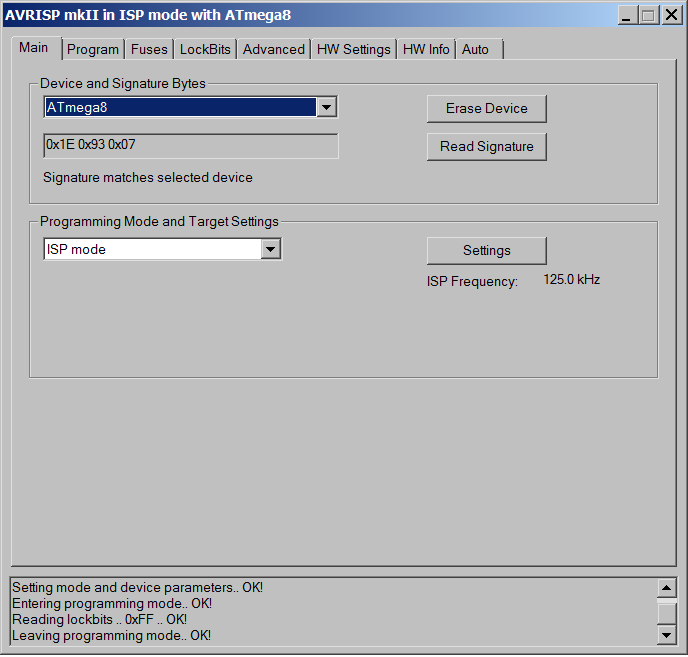
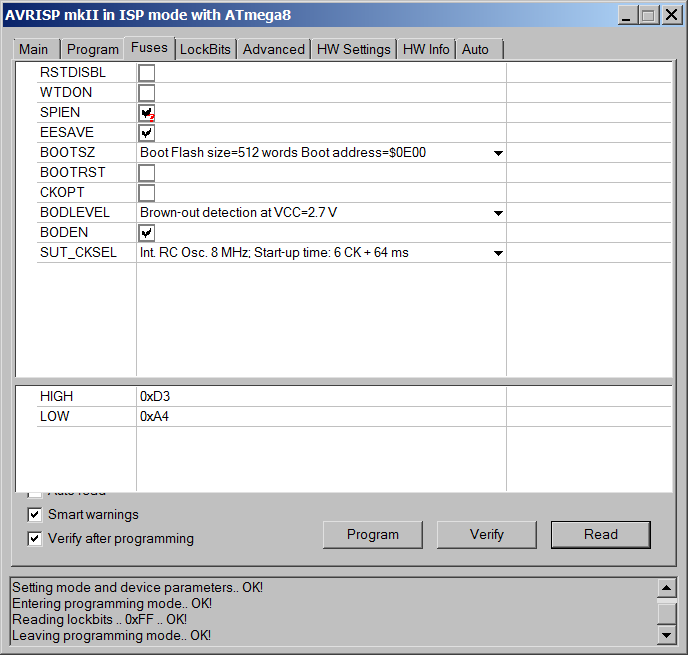
Also firmware files from THDP0200 probe body (part with controls and actual front-end electronics).
Intel HEX-file Flash contents, ATmega48 MCU
Intel HEX-file EEPROM contents, ATmega48 MCU
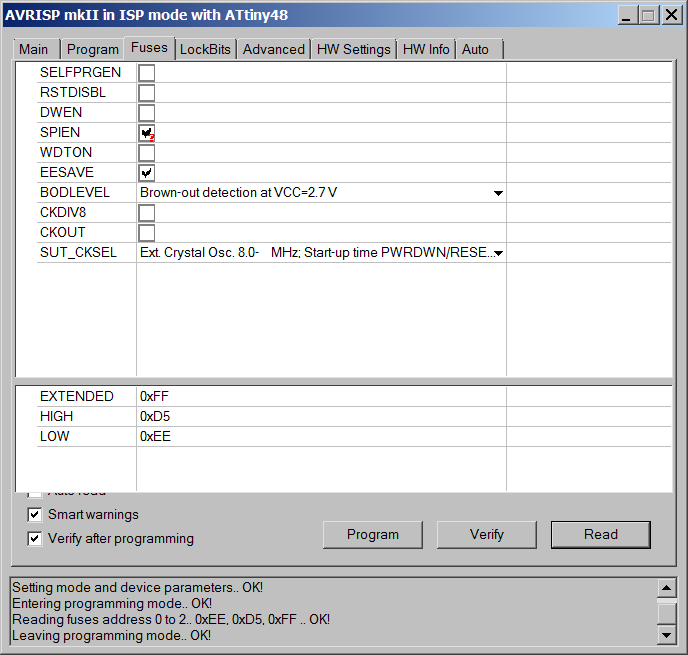
Perhaps it would be good idea to collect dumps from various Tektronix probes to aid other repairs in future. TheSignalPath also featured a teardown and quick repair of his THDP0200 probe in TNP #23 Episode. TSP probe had corrupt\incorrect EEPROM firmware in ATTiny48 microcontroller.
Projects like this are born from passion and a desire to share how things work. Education is the foundation of a healthy society - especially important in today's volatile world. xDevs began as a personal project notepad in Kherson, Ukraine back in 2008 and has grown with support of passionate readers just like you. There are no (and never will be) any ads, sponsors or shareholders behind xDevs.com, just a commitment to inspire and help learning. If you are in a position to help others like us, please consider supporting xDevs.com’s home-country Ukraine in its defense of freedom to speak, freedom to live in peace and freedom to choose their way. You can use official site to support Ukraine – United24 or Help99. Every cent counts.
Modified: Oct. 18, 2022, 5:14 a.m.

